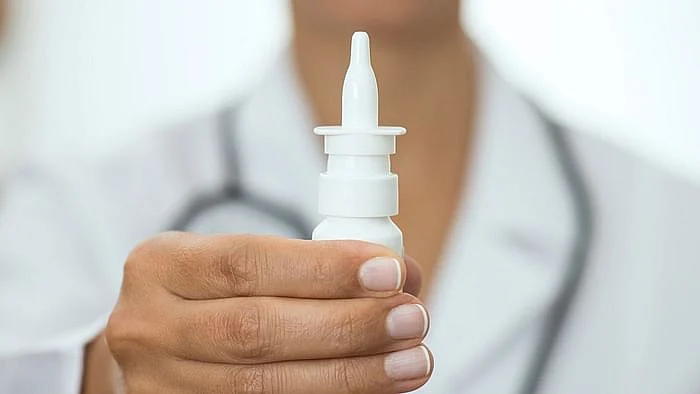(This article was first published on 20 January 2021. It has been republished from The Quint’s archives after Prime Minister Narendra Modi mentioned that research on nasal vaccine was underway on 7 June 2021.)
The clinical trial for Bharat Biotech’s nasal Covid-19 vaccine candidate kicked off in Hyderabad on 5 March.
Subject Expert Committee (SEC) of the Central Drugs Standard Control Organisation (CDSCO) has given permission to Bharat Biotech to conduct Phase 1 clinical trials of their intranasal COVID vaccine, denying their request for simultaneous Phase 1 & 2 trials earlier in January.
On 23 September, Hyderabad-based vaccine developer Bharat Biotech announced a licensing agreement with Washington University School of Medicine for ‘BBV154’ 0 a novel chimp-adenovirus, single-dose intranasal COVID-19 vaccine.
As per IANS reports, the clinical trials will be conducted at various locations.
So far, the COVID vaccines in India are intramuscular, which means they are delivered by injections to the muscles. But there are many ways you can get a vaccine, for example: As an injection, which is subcutaneous, meaning that it goes into the tissue between the skin and muscles, or orally, via a liquid solution. Intranasal vaccines are especially helpful for infants, where the vaccine is sprayed into the nostrils and inhaled.
A Better Alternative to Injections?
Firstly, they just require one dose and save a lot of logistical hassle. Second, they are easier to administer and can be given to more people, such as children. Not relying on skilled healthcare workers and instead being able to self-administer the vaccine will be a huge bonus, especially in crunch situations like pandemics, where organising resources is difficult.
“It’s an easy-to-deliver vaccine. It’s going into a mucosal surface, likely to be restricted (and there is a) likelihood of lower safety events. It can be delivered in combination with influenza vaccines,”Virologist Dr Gagandeep Kang told The Indian Express.
“The ability to accomplish effective immunisation with a single nasal dose is a major advantage, offering broader reach and easier administration. An effective nasal dose not only protects against COVID-19 but also prevents the spread of the disease by offering another kind of immunity, that occurs primarily in the cells that line the nose and throat. Most other vaccine candidates currently under development can’t do that,” added Dr David T Curiel, MD, Ph D, Director of Biologic Therapeutics Center and Professor of Radiation Oncology, at Washington University School of Medicine in St Louis and Precision Virologics’ Interim CEO.
How Does the Nasal Vaccine Work?
As per WebMD, “The spray causes your immune system to make proteins in your blood and in your nose that help you fight the virus.” This works in the case of the coronavirus, as your nose is one of the most common ways the virus enters your body.
The animal trials of this intranasal vaccine candidate has shown, “Unprecedented levels of protection in mice studies.” The data has recently been published in the prestigious scientific journal Cell and the Journal Nature.
What Are the Concerns?
Only five out of 187 COVID vaccines being developed worldwide as per the World Health Organisation, are listed as intranasal.
One main reason for this is that the practical effectiveness of this mode of delivery. Experts suggest that most attempts to deliver nasal vaccines have been unsuccessful, except for some flu vaccines.
“Despite the theoretical advantages, the intranasal approach for vaccination is largely unproven. While this concept has been tested quite extensively in animals, whether this holds true in humans is still largely untested and so the clinical trials here will definitely have to be watched closely. Save for the flu vaccine, there really isn’t much of a precedent for using such a vaccine.”Dr Davinder Gill, former CEO of Hilleman Laboratories
Another issue is that only very small volumes, around 0.1 ml, can be administered in each nostril, which means the vaccine antigens should be there in high concentrations.
Despite not requiring healthcare workers to administer these, it is important to be educated on the proper way to give and take this type of vaccine.
(This story was first published on FIT and has been republished here with permission.)
